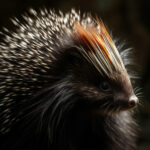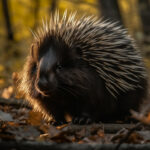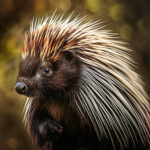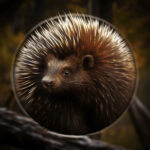Porcupines are fascinating creatures that have captured the curiosity of many. Known for their unique appearance and defensive quills, these small mammals have a variety of factors that attract them to certain environments. Understanding what attracts porcupines can help us gain insight into their behavior and habitat preferences. In this article, we will explore the different aspects that draw porcupines to specific areas, including food sources, shelter, and mating opportunities. By delving into these factors, we can gain a deeper understanding of these intriguing animals and their natural inclinations. So, let’s dive in and uncover what makes porcupines tick!
Key Takeaways
- Porcupines are attracted to areas with abundant food sources, such as trees and shrubs.
- They are also drawn to areas with suitable shelter, such as thick vegetation or hollow trees.
- Porcupines are primarily nocturnal animals, so they are more active during the night.
- They are attracted to salt and may seek it out in human-made structures, such as wooden tool handles or vehicles.
- Porcupines are generally solitary animals and prefer areas with low human disturbance.
Understanding Porcupines: A Brief Overview
Porcupines are fascinating creatures that have captured the curiosity of many nature enthusiasts. With their unique appearance and intriguing behaviors, it’s no wonder people are drawn to learn more about them. In this section, we will provide a brief overview of porcupines, including where they can be found and the habitats they prefer.
A. Where Can Porcupines Be Found?
Porcupines can be found in various regions across the globe, including North and South America, Europe, Africa, and Asia. However, the North American porcupine, also known as Erethizon dorsatum, is the most well-known and widely studied species.
In North America, porcupines can be found in a range of habitats, from forests and woodlands to grasslands and deserts. They are adaptable creatures that can thrive in diverse environments, as long as their basic needs are met.
B. The Habitat of Porcupines: Where Do They Live?
Porcupines have specific habitat preferences that influence where they choose to live. These habitats provide the necessary resources for their survival, including food, shelter, and protection from predators.
-
Forests and Woodlands: Porcupines are commonly found in forests and woodlands, where they can take advantage of the abundance of trees for both food and shelter. They are particularly fond of coniferous forests, such as those dominated by hemlock and spruce trees.
-
Grasslands and Meadows: While porcupines are primarily associated with forests, they can also be found in grasslands and meadows, especially in areas where there are adjacent woodlands. These open habitats provide a different range of food sources, such as grasses, herbs, and shrubs.
-
Rocky Areas: Porcupines are skilled climbers and are often found in rocky areas, such as cliffs and outcrops. These areas offer them protection from predators and access to a variety of vegetation.
-
Urban Environments: In some cases, porcupines may venture into urban environments, especially if there is suitable habitat nearby. They may take up residence in parks, gardens, or even suburban neighborhoods, where they can find food and shelter.
Porcupines are adaptable in their choice of habitat, but they do have some common requirements. They prefer areas with ample vegetation, especially trees, as they rely on bark, twigs, and leaves as their primary food source. Additionally, they seek out areas with suitable denning sites, such as hollow trees, rock crevices, or burrows.
Understanding the habitats porcupines prefer can help us appreciate their ecological role and promote their conservation. By preserving and protecting their habitats, we can ensure these fascinating creatures continue to thrive in the wild.
The Attraction Factor: What Draws Porcupines?
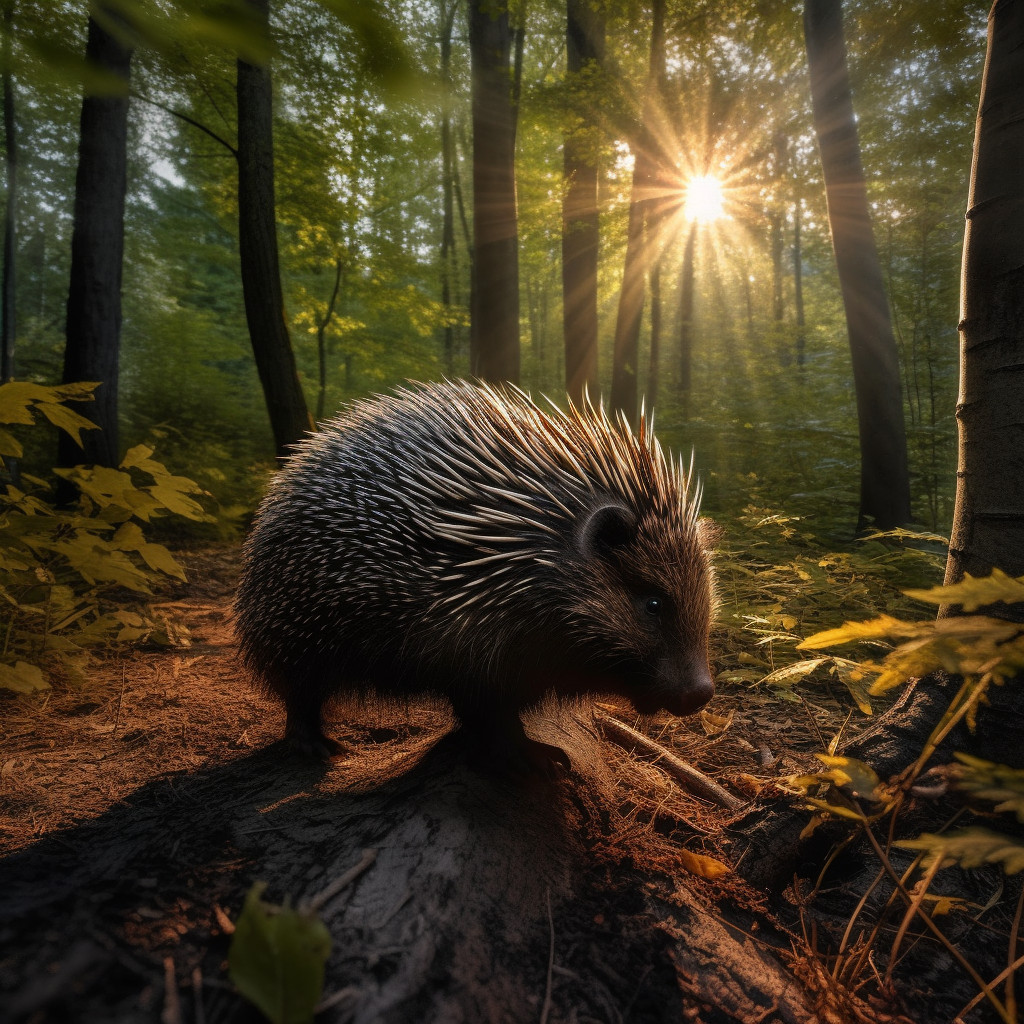
Porcupines are fascinating creatures, known for their unique appearance and defensive quills. But have you ever wondered what attracts porcupines to certain areas? In this section, we will explore the factors that draw porcupines, including their food preferences and the role of tree bark in their diet.
A. What Attracts Porcupines to Your Yard?
Porcupines are primarily herbivores, meaning they feed on plant material. So, if you have a yard filled with trees and vegetation, you might find these spiky creatures paying you a visit. Porcupines are attracted to areas abundant in their favorite food sources, such as tree bark, leaves, and twigs.
Here are some factors that may attract porcupines to your yard:
-
Food availability: Porcupines are attracted to areas where they can find an ample food supply. If your yard has a variety of trees and plants that porcupines enjoy, they may be more likely to visit.
-
Shelter: Porcupines are nocturnal animals, meaning they are most active at night. They prefer areas with suitable shelter, such as trees with hollows or dens. If your yard has trees that provide potential den sites, porcupines may be attracted to the area.
-
Water sources: Like any other animal, porcupines need access to water. If your yard has a water source nearby, such as a pond or stream, it may attract porcupines looking for hydration.
-
Salt licks: Porcupines have been known to have a craving for salt. If you have salt licks or mineral blocks in your yard, it might attract porcupines seeking these essential minerals.
Remember, porcupines are wild animals, and it’s important to respect their space and observe them from a safe distance. If you encounter a porcupine in your yard, enjoy the opportunity to observe these intriguing creatures but avoid any direct contact.
B. The Role of Food: What Food Attracts Porcupines?
Porcupines have a diverse diet, but their food preferences can vary depending on the season and availability. Their diet mainly consists of tree bark, leaves, twigs, and other plant material. Let’s take a closer look at the food that attracts porcupines:
-
Tree bark: Porcupines are well-known for their ability to strip tree bark. They have strong teeth and jaws that allow them to gnaw through the tough outer layer of trees. Bark from trees like hemlock and pine is particularly appealing to porcupines.
-
Leaves and twigs: In addition to bark, porcupines also feed on leaves and twigs. They have a preference for certain types of leaves, such as those from maple, aspen, and birch trees.
-
Fruits and nuts: While not a staple in their diet, porcupines may also consume fruits and nuts when available. Apples, berries, and acorns are among their favorites.
It’s important to note that porcupines are selective eaters and may have preferences for specific types of trees and plants. If you have a yard with a variety of vegetation, you may attract porcupines looking for their preferred food sources.
C. The Bark Diet: Why Do Porcupines Eat Bark?
Porcupines have a unique adaptation that allows them to consume tree bark. While other animals may nibble on leaves or twigs, porcupines have specialized teeth and digestive systems that enable them to feed on bark. But why do porcupines eat bark?
-
Nutritional value: Bark contains essential nutrients and minerals that porcupines need for their diet. It provides them with carbohydrates, fiber, and other nutrients necessary for their survival.
-
Winter survival: During the winter months, when other food sources may be scarce, porcupines rely heavily on tree bark. Bark is available year-round and serves as a vital food source for porcupines during the colder months.
-
Tooth maintenance: Gnawing on bark helps keep a porcupine’s teeth healthy and sharp. Their teeth grow continuously throughout their lives, and chewing on bark helps wear them down to a manageable length.
By consuming bark, porcupines not only meet their nutritional needs but also play a role in shaping their environment. Their feeding habits can impact the growth and health of trees, making them an important part of the ecosystem.
In conclusion, porcupines are attracted to areas with abundant food sources, suitable shelter, and water availability. Their diet primarily consists of tree bark, leaves, and twigs, which provide them with the necessary nutrients. By understanding what attracts porcupines, we can appreciate these fascinating creatures and coexist with them in harmony.
The Interaction between Porcupines and Dogs
Porcupines and dogs are not the best of friends. The quills of a porcupine can cause a lot of pain and discomfort to a dog if they come into contact with each other. In this section, we will explore how porcupines attack dogs and discuss some measures to deter porcupines from dogs.
A. The Danger Zone: How Do Porcupines Attack Dogs?
Porcupines have a unique defense mechanism – their quills. These quills are sharp, barbed, and easily detachable. When a porcupine feels threatened, it will raise its quills and back into its attacker. This is how they attack dogs.
When a dog encounters a porcupine, it may become curious and approach the porcupine. If the dog gets too close, the porcupine will turn its back and swing its tail towards the dog. The quills on the tail will embed themselves into the dog‘s skin, causing pain and potential injury.
It’s important to note that porcupines don’t actively seek out dogs to attack. They are generally peaceful animals and will only use their quills as a last resort when they feel threatened. However, dogs with a high prey drive or those that are not familiar with porcupines may be more likely to approach them, increasing the risk of an encounter.
B. Deterrence Measures: How to Deter Porcupines from Dogs?
Preventing encounters between dogs and porcupines is the best way to avoid any potential harm. Here are some measures you can take to deter porcupines from dogs:
-
Keep dogs on a leash: When walking your dog in areas where porcupines are known to reside, it’s essential to keep them on a leash. This will give you better control over your dog’s movements and prevent them from getting too close to a porcupine.
-
Train your dog: Teaching your dog basic commands like “leave it” and “stay” can be helpful in preventing them from approaching a porcupine. Training your dog to respond to these commands can be a lifesaver in situations where encounters with porcupines are possible.
-
Remove attractants: Porcupines are attracted to food sources, so it’s important to remove any potential attractants from your yard or property. This includes securing garbage cans, cleaning up fallen fruits or vegetables, and keeping pet food indoors.
-
Fencing: Installing a fence around your property can help keep porcupines out. Make sure the fence is buried at least a foot underground to prevent them from burrowing underneath it.
-
Use deterrents: There are commercially available deterrents that can be used to keep porcupines away from your property. These deterrents often emit a scent that is unpleasant to porcupines, deterring them from entering the area.
Remember, prevention is key when it comes to porcupine-dog interactions. By taking these measures, you can reduce the risk of your dog encountering a porcupine and potentially getting injured by their quills.
In the next section, we will explore the porcupine‘s natural habitat and discuss what attracts them to certain areas. Stay tuned!
The Search for Porcupines: Tips and Techniques

A. How to Find Porcupines: Look Everywhere
If you’re interested in observing porcupines in their natural habitat, you’ll need to know where and how to find them. Porcupines are fascinating creatures, and with a little patience and some knowledge of their behavior, you can increase your chances of spotting them. Here are some tips and techniques to help you in your search:
-
Research their habitat: Porcupines are found in various habitats across North America, including forests, grasslands, and mountains. They are particularly fond of areas with dense vegetation and an abundance of trees, as they rely on trees for food and shelter.
-
Look for signs: Porcupines leave behind distinctive signs that can help you identify their presence. Keep an eye out for chewed tree bark, especially around the base of trees. Porcupines have a habit of gnawing on tree bark, which leaves behind noticeable tooth marks.
-
Scan the treetops: Porcupines are excellent climbers and spend a significant amount of time in trees. Look up and scan the treetops for any signs of movement or unusual shapes. Porcupines have a stocky body with a rounded appearance, making them relatively easy to spot once you know what to look for.
-
Search during the night: Porcupines are primarily nocturnal creatures, meaning they are most active during the night. If you want to increase your chances of finding them, consider venturing out after sunset. Use a flashlight to scan the trees and listen for any rustling sounds.
-
Be patient and observant: Spotting porcupines in the wild requires patience and keen observation skills. Take your time and move slowly, as sudden movements or loud noises can startle them. Look for any signs of movement or unusual shapes, and don’t forget to check the ground for quills or other evidence of their presence.
B. What Deters Porcupines: Insights for a Successful Search
While it’s essential to know how to find porcupines, it’s equally important to understand what deters them. By understanding their preferences and dislikes, you can increase your chances of successfully attracting porcupines to your desired location. Here are some insights to keep in mind:
-
Avoid strong scents: Porcupines have a keen sense of smell, and certain strong scents can deter them. Avoid using strong perfumes, colognes, or any other heavily scented products when searching for porcupines. The strong odors may repel them and make it more challenging to attract them to your location.
-
Minimize noise and disturbances: Porcupines are generally shy and prefer quiet, undisturbed areas. Avoid making excessive noise or causing disturbances that may scare them away. Move slowly and quietly, and try to blend into your surroundings as much as possible.
-
Provide suitable habitat: Porcupines are attracted to areas with an abundance of trees, especially those with soft bark, such as hemlock. If you’re looking to attract porcupines to a specific location, consider planting or preserving trees that are favorable to their feeding habits. Creating a suitable habitat can increase the chances of porcupines visiting your area.
-
Offer food sources: Porcupines have a varied diet that includes tree bark, leaves, twigs, and even salt. If you want to attract porcupines, consider leaving out food sources that they find appealing. This could include fallen branches, fresh leaves, or even a salt lick specifically designed for porcupines.
Remember, when trying to attract porcupines, it’s important to respect their natural behavior and habitat. Avoid any actions that may harm or disturb them, and always observe from a safe distance. With patience and a little knowledge, you can increase your chances of encountering these fascinating creatures in the wild.
The Importance and Purpose of Porcupines in the Ecosystem

A. Why Are Porcupines Important?
Porcupines may not be the first animal that comes to mind when thinking about the importance of species in an ecosystem. However, these prickly creatures play a vital role in maintaining the balance and health of their environment. Let’s explore why porcupines are important and how they contribute to the overall well-being of the ecosystem.
-
Seed Dispersal: Porcupines are known as “nature’s gardeners” due to their role in seed dispersal. As they move through their habitat, porcupines inadvertently pick up seeds on their quills and fur. These seeds then get carried to different areas, promoting plant diversity and aiding in the regeneration of forests. By spreading seeds, porcupines contribute to the growth and survival of various plant species.
-
Tree Pruning: Porcupines have a voracious appetite for tree bark. While this may seem detrimental to the trees, it actually serves a purpose. Porcupines selectively consume the inner bark of trees, which helps to control the growth of certain species. By pruning trees, porcupines prevent overcrowding and allow sunlight to reach the forest floor, benefiting understory plants and promoting a healthier forest ecosystem.
-
Food Source for Predators: Porcupines are an important food source for many predators, including bobcats, coyotes, and fishers. By providing sustenance for these carnivores, porcupines contribute to the stability of predator-prey relationships within the ecosystem. They help maintain a balance in the food chain, ensuring the survival and well-being of other species.
B. The Role They Play: What Purpose Do Porcupines Serve?
Porcupines serve several important purposes within their ecosystem. Let’s delve into the specific roles they play and how these contribute to the overall functioning of the natural world.
-
Habitat Creation: Porcupines create dens in hollow trees, rock crevices, or burrows in the ground. These dens not only provide shelter for the porcupines themselves but also serve as homes for other animals. After a porcupine vacates a den, it becomes available for use by other small mammals, birds, or reptiles. This process of den creation by porcupines helps to enhance habitat diversity and provides valuable nesting sites for various species.
-
Nutrient Cycling: Porcupines have a unique digestive system that allows them to extract nutrients from tough plant materials, such as bark and twigs. As they consume these plant parts, they break them down into smaller pieces, aiding in the decomposition process. The partially digested plant matter is then excreted as feces, which enriches the soil with essential nutrients. This nutrient cycling by porcupines contributes to the overall fertility of the ecosystem, benefiting plant growth and health.
-
Ecosystem Engineers: Porcupines, through their foraging and den-building activities, act as ecosystem engineers. By selectively feeding on certain plant species and creating dens in specific locations, they shape the structure and composition of their habitat. These modifications influence the distribution of plants, affect microclimates, and create niches for other organisms. The alterations made by porcupines have far-reaching effects on the ecosystem, promoting biodiversity and supporting a variety of wildlife.
In conclusion, porcupines may not be the most glamorous or well-known creatures, but they play a crucial role in maintaining the balance and functioning of their ecosystem. From seed dispersal to tree pruning, and from providing food for predators to creating habitats for other species, porcupines contribute in numerous ways. Understanding and appreciating the importance of porcupines helps us recognize the intricate web of life and the interconnectedness of all living beings within the natural world. Conclusion
In conclusion, porcupines are attracted to a variety of factors in their environment. They are primarily drawn to food sources such as bark, leaves, and fruits, which provide them with the necessary nutrients for survival. Porcupines are also attracted to areas with suitable shelter, such as trees, logs, and rock crevices, where they can find protection from predators and harsh weather conditions. Additionally, porcupines are attracted to areas with a dense vegetation cover, as it provides them with ample hiding spots and camouflage. Understanding what attracts porcupines can help us better coexist with these fascinating creatures and ensure their continued presence in our ecosystems. So, if you ever come across a porcupine, remember to appreciate their unique qualities and give them the space they need to thrive in their natural habitat.
Frequently Asked Questions
What attracts porcupines to your yard?
Porcupines are attracted to yards that provide food sources, such as tree bark, plants, and salt licks. They are also drawn to areas that offer shelter, like woodpiles or brush piles. Additionally, porcupines are attracted to certain smells, such as the scent of salt or certain plants.
How to deter porcupines?
To deter porcupines, remove food sources from your yard, such as salt licks and plants that they like to eat. You can also install fencing around your property, but make sure it is sturdy as porcupines might chew through weak materials. Using repellents that contain capsaicin can also help.
How do porcupines attack dogs?
Porcupines do not typically attack dogs, but if they feel threatened, they might use their quills as a defense mechanism. The quills are barbed and can cause serious injury to dogs that come into contact with them.
Where can porcupines be found?
Porcupines can be found everywhere from forests to deserts, depending on the species. The North American porcupine, for instance, is found across the United States, Canada, and northern Mexico. They prefer habitats that provide plenty of trees for food and shelter.
How to find porcupines?
Look everywhere in their natural habitat, especially near food sources like trees and salt licks. Porcupines are nocturnal, so they are most active during the night. Look for signs of their presence such as chewed bark or droppings.
Why are porcupines important?
Porcupines play a crucial role in their ecosystems. They help control the population of certain plants by eating them. Additionally, their quills serve as a defense mechanism that can deter predators, contributing to the balance of the food chain.
Why do porcupines eat bark?
Porcupines eat bark as part of their diet because it provides them with necessary nutrients. They also consume tree bark during the winter when other food sources might be scarce.
What purpose do porcupines serve?
Porcupines serve several purposes in their ecosystems. They help control plant populations by eating them, their quills deter predators, and they serve as a food source for some animals. They also contribute to the nutrient cycle by spreading seeds through their droppings.
Where does porcupines live?
Porcupines live in a variety of habitats, from forests to deserts, depending on the species. They often nest in trees, caves, or burrows, and they prefer environments that provide plenty of food sources like trees and salt licks.
What food attracts porcupines?
Porcupines are attracted to a variety of foods, including tree bark, plants, and salt. They are also known to eat fruits, vegetables, and nuts. In residential areas, they might be attracted to garden plants, pet food, or compost piles.

